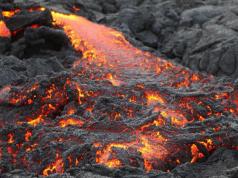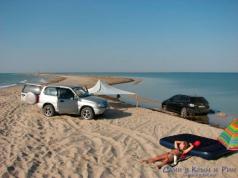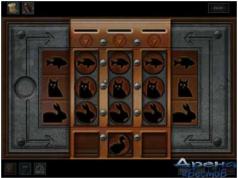McDonnell Douglas DC8 at Amsterdam Airport. November 1978. Photo: Boudewijn Deurvorst
Anyone who is interested in aviation has always been interested in the topic of what airplanes flew in the last century or what airplanes from the Soviet era were like here and “in the West.” For people of the older generation, the middle of the last century has a romantic connotation, since the history of aviation was just beginning. There were few airports, kerosene, and air tickets cost a penny, and the atmosphere on board the first jet passenger aircraft was more reminiscent of a restaurant with good service than the interior of a commuter bus.


However, time passed, competition appeared and airlines began to understand that passengers first of all needed a flight, and then high-quality service. Of course, this position was dictated by economic considerations. Thus, tables with food disappeared from the planes, and the number of seats increased. This is how business class appeared for those who are not ready to part with comfort.

And here is lunch on board the Tu-104. One of the first Soviet jet aircraft.


Of course, I would like to tell you a little about the Tu-104, because it was the first Soviet jet passenger aircraft.
The basis of the airliner was taken from the Tu-16 (the “104” plane even at one time bore the designation Tu-16P - “passenger”) in order to save resources and time on the overall development of the design. Thus, the task of training flight technical personnel was also simplified, and savings were also made on ground-based maintenance and repair equipment.
This could not but affect the quality of the aircraft. There was even a cruel joke: “The Tu-104 is the fastest plane: it will take you to the grave in two minutes.” The accident rate of the new car, by modern standards, was simply beyond reason. Over the entire history of operation, 37 vehicles suffered serious accidents - 18% of the total number produced. The first major accident happened already in 1958: the plane crashed after running out of fuel.

But even so, the Tu-104 was much more reliable than its English competitor, the De Havilland Komet (23% of lost vehicles): it could fall apart in the air due to metal fatigue, as it was extremely poorly designed.
Pictured is a de Havilland DH.106 Comet.

In 1960, the first Soviet passenger airliner was discontinued and was successfully replaced by Aeroflot turboprop airliners Il-18. But the last Tu-104s were removed from regular airlines only in 1979.
Meanwhile, aviation was booming in the United States. The aircraft, created in 1954, literally revolutionized aircraft manufacturing. Thanks to this airliner, international air travel has become widespread and popular.


In 1969, Boeing designed the first double-decker transcontinental airliner. Jumbo Jet. Legend. What can I say...



And in this photo you see the now defunct Hong Kong Kai Tak Airport from 1971, which was the main air gateway to the territory from 1925 to 1998.

The approach to runway 13 at Kai Tak Airport has gained worldwide fame due to its complexity and spectacle.

I recently acquired several photographs of airplanes.
There is no output data, it is unknown when the pictures were taken.
But I know the names of two planes, but the one in the title photo does not.
Can anyone tell me what kind of plane is in the photo?
Quote from the aviation reference book V.B. Shavrova:
The aircraft was intended for military use, so it was planned to install armor and weapons.
In addition, the structure was easily disassembled within 5 minutes; when disassembled, the Bi-Kok was placed in a transport container measuring 3.7 x 1.8 x 1.7 m.
The main reason for the appearance of the “collapsible” aircraft was its construction in the designer’s personal apartment, located on the 6th floor of a residential building.
"B-Kok" was successfully tested from August 15 to September 5, 1914.
With a full load of 256 kg, equal to the weight of an empty aircraft, pilot M.L. Grigorashvili managed to reach a maximum speed of about 100 km/h.
And this is how the short biography of this curious machine ended:
Two more photos under the cut.
The plane "Russian Knight" (S-21 "Big Russian-Baltic") - the world's first four-engine aircraft, gave rise to heavy aviation.
Created by I. I. Sikorsky as an experimental aircraft for strategic reconnaissance.
Moreover, the photo shows an early twin-engine modification.

The aircraft "Ilya Muromets" (S-22 "Ilya Muromets") is the general name of several series of four-engine all-wood biplanes produced in Russia at the Russian-Baltic Carriage Plant during 1914-1919.
The plane set a number of records for carrying capacity, number of passengers, time and maximum flight altitude.
It is the world's first serial multi-engine aircraft.
The aircraft was developed by the aviation department of the Russian-Baltic Carriage Plant in St. Petersburg under the leadership of I. I. Sikorsky.
“Ilya Muromets” appeared as a result of further development of the “Russian Knight” design, during which it was almost completely redesigned; only the general layout of the aircraft and its wing box with four engines installed in a row on the lower wing were left without significant changes, while the fuselage was fundamentally new.
As a result, with the same four 100 hp Argus engines. With. the new aircraft had twice the load weight and maximum flight altitude.
As explained in the comments, this is the III ship (factory No. 151, serial No. B-10), of the same type as Gorshkov’s Kievsky (formerly the seventh).
These were the first two devices built on the basis of the first unsuccessful experience in the combat use of B-series ships.
In general, they saved Sikorsky’s reputation.
Thanks to the efforts of Gorshkov, Bashko (commanders of Kievsky), Brodovich and Ozersky (commanders of the Third), this couple carried out the lion's share of the work of the EVC in 1915. Externally, these ships are easily recognized by their “pike nose”.
They were called “sharp-nosed”, unlike other cars.
The third ship, unlike the Kievsky, had more developed glazing in the front part of the cabin.
Why are airplanes built?
When the first airline pilots managed to take off, it was perceived as a real revolution in science and technology. Then airplanes began to be used for various purposes - from passenger and cargo transportation to combat operations during the war. Gradually, models were developed that flew higher and faster. Today, some aircraft are used to provide assistance to people in trouble and even to extinguish forest fires.
Soon after the first flights of motorized airplanes, people began to use aviation for military purposes. In the First World War (1914 - 1918) they were used in reconnaissance, which made it possible to effectively monitor the enemy. Then the fighters began to fight each other in the air, and the bombers attacked the enemy troops. A large number of aircraft were used in World War II (1939 - 1945). The invention of the jet engine made them even more dangerous. Today, the Air Forces of different countries are constantly improving aircraft technology and flight methods.
Compare ancient and modern airplanes
Vintage aircraft are already very different from modern ones. In 1950, thanks to the use of the first jet engines, airplanes began to reach high speeds. Now there are aircraft, for example, the Russian Tu-144, the European Concorde, which were able to exceed the speed of sound. Modern airplanes are different in that they fly higher and faster than ancient ones, cover long distances, and can also transport large numbers of people and cargo.
TU-144 is the first passenger airliner in history, broke the sound barrier. This happened on June 5, 1969.
The largest scheduled airliner In the world, the Boeing 747 reaches a length of 70 m, its wingspan is 65 m. It can carry 566 passengers and flies 13,000 km without additional refueling. During long flights, passengers are offered hot meals prepared on board the aircraft.
Seaplanes equipped with wheels for landing on land and floats for splashdown. It is equipped with tanks for transporting water and foam necessary when extinguishing a fire. This aircraft is also used to rescue people at sea. It can also spray chemicals that help clean up oil spills.
Flying doctors. Some doctors use the plane to visit patients living in very remote areas of the country.
It’s hard to imagine our life without airplanes; they perform many important tasks that people need.
The Caspian Sea Monster, also known as the "Caspian Monster", was an experimental ekranoplan developed by the design bureau of Rostislav Alekseev in 1966.
Stipa- Caproni
Stipa-Caproni is an experimental Italian aircraft with a barrel-shaped fuselage (1932).
The Blohm & Voss BV 141 is a German tactical reconnaissance aircraft from World War II, famous for its unusual structural asymmetry.
Douglas XB-42 "Mixmaster" - experimental bomber specifically designed for very high top speed (1944).
The Libellula, a British experimental aircraft with twin wings and two engines, gave pilots excellent visibility when landing on aircraft carriers (1945).
NorthAmericanXF-82
North American XF-82 - Stitch two P-51 Mustangs together and you get this long-range escort fighter (1946).
NorthropXB-35
The Northrop XB-35 was an experimental flying wing bomber developed for the United States Air Force at the end of World War II.
The McDonnell XF-85 "Goblin" was an American prototype jet fighter that was supposed to be launched from the bomb bay of a Convair B-36 aircraft (1948).
MartinXB-51
Martin XB-51, American attack aircraft with three engines. Note the unconventional design with one engine in the tail and two in pods under the forward fuselage (1949).
DouglasX-3 "Stiletto»
The Douglas X-3 "Stiletto" was built to study the design features needed for an aircraft to fly at supersonic speeds (1953-1956).
LockheedXFV
Lockheed XFV "The Salmon", an experimental prototype escort fighter with tail-take-off capability (1953).
Flying platform aerocycleDeLacknerHZ-1
The De Lackner HZ-1 was designed as a single-seat aircraft for reconnaissance missions (1954).
Flying coleopterSnecma (C-450)
Snecma C-450 - French experimental airplane with circular wings and a turbo engine, capable of taking off and landing vertically (1958).
AvroCanadaVZ-9 "Avrocar»
Avro Canada VZ-9 "Avrocar" is a disc-shaped vertical take-off and landing aircraft developed as part of a secret US Army project (1959).
H.L.-10
The HL-10 is one of five aircraft built as part of NASA's Lifting Body Research Program (1966 - 1970).
DornierDo 31
Dornier Do 31 - West German experimental vertical take-off and landing transport aircraft (1967).
« Aerodyne» Alexandra Lippisha
"Aerodyne" by Alexander Lippisch is an experimental wingless aircraft. Its thrust was provided by two coaxial internal propellers (1968).
VoughtV-173
The Vought V-173 "Flying Pancake" was an experimental fighter aircraft developed for the United States Navy (1942).
HyperIII
Hyper III is a full-size remotely controlled aircraft built at NASA's Flight Research Center in 1969.
VVA-14 Roberta Bartini
VVA-14 - Soviet vertical take-off amphibious aircraft, developed at the Beriev design bureau in the 1970s.
Ames- Dryden (AD)-1 with beveled wing
Ames-Dryden (AD)-1 - research aircraft designed to study the variable wing concept (1979-1982).
B377 PG
The B377PG is a NASA super-turbine cargo aircraft that first flew in 1980.
X-29
The X-29 is a forward-swept wing fighter designed to demonstrate the technology at NASA's Dryden Flight Research Center (1984-1992).
Tailless fighterX-36
The X-36 is a scaled-down fighter prototype built by McDonnell Douglas for NASA (1996 - 1997).
Aquaplane BerievBe-200
The Be-200 is a Russian multi-role amphibious aircraft, designed by the Beriev design bureau in 1998.
Proteus is a twin-wing, twin-engine research vessel built by Scaled Composites in 1998.
CaproniCa.60 Noviplano
The Caproni Ca.60 Noviplano was a nine-wing flying boat that was to become the prototype for a transatlantic airliner capable of carrying one hundred passengers. It had eight engines and three sets of triple wings. Two pontoons, strengthened on each side, were supposed to give the ship stability. Only one example of this aircraft was built, and it made only one short flight over Lake Maggiore in Italy on March 4, 1921. The plane gained a height of only 18 meters and then fell, breaking apart on impact. Its pilot was not injured. Caproni collected the wreckage of his plane washed ashore and announced that he intended to rebuild it, but that night all the surviving parts burned down.
1. Compare the features of travel by car, train, ship, plane. Which of these modes of transport is the fastest? Draw
- Depending on the type of vessel, the ship's speed can reach 18 - 55 km/h. The slowest ships are tankers, bulk carriers and refrigerated ships, and the fastest are passenger and cargo ferries and military submarines and aircraft carriers, their speed can reach 120 km/h.
- The speed of the vehicle depends on its type and the restrictions established by the traffic rules. For example, in Russia, within the city limits, cars are prohibited from moving at a speed of more than 60 km/h, but on the highway you can drive at a speed of 110 km/h. The technical characteristics of cars make it possible to reach high speeds. For example, the Bugatti Veyron Super Sport can accelerate to 431 km/h.
- The speed of trains also depends on the type of train and the type of railway. Typically in Russia, trains travel at speeds of 50-90 km/h, and high-speed trains accelerate to 140-200 km/h. In Europe, the average train speed is 160 km/h, and in Japan - 320 - 330 km/h. By the way, it was in Japan that the train speed record was set. In 2003, a maglev train reached a speed of 581 km/h.
- Modern passenger aircraft usually fly at speeds of 210 - 800 km/h, but can accelerate to 950 km/h. One of the famous passenger airliners - Concorde - flew at a cruising speed of 2150 km/h. Unfortunately, the fuel consumption of this aircraft was too high and its flights ceased in 2003. Military hypersonic aircraft can fly at speeds of several thousand km/h. For example, the Russian Mig-25 air reconnaissance aircraft reaches speeds of up to 3916 km/h, and the American North American X-15 aircraft, designed specifically to study the properties of hypersonic aircraft, flew at a speed of 8200 km/h.
2. Find vintage airplanes in the picture and mark them with a tick. Compare ancient and modern airplanes. What are their similarities and what are their differences?

Similarities between ancient and modern aircraft:







